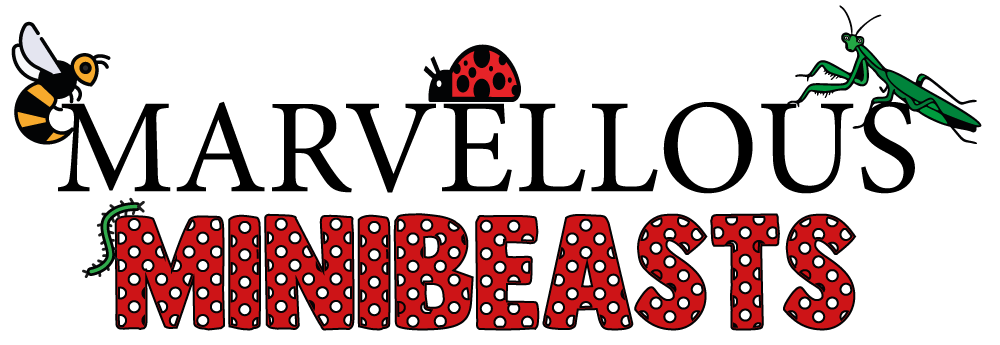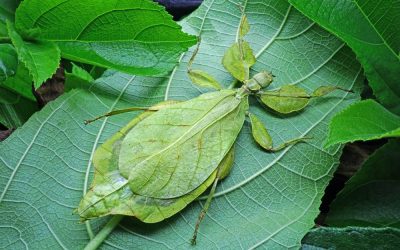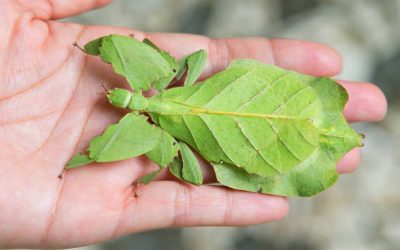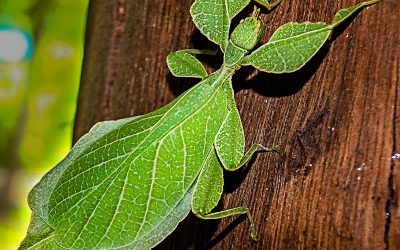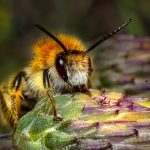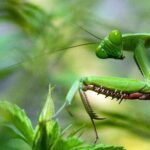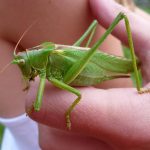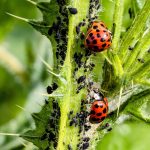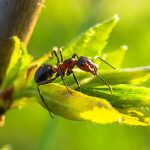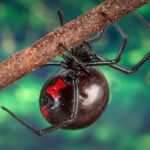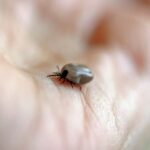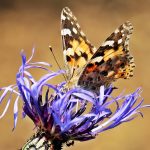
Leaf insects are fascinating creatures that capture the imagination of both children and teens. With their incredible camouflage abilities and unique physical characteristics, leaf insects are truly one of nature’s wonders.
In this article, we will explore the world of leaf insects, providing an in-depth look at their behaviour, habitat, adaptations, and more. Through a mix of informative content and interactive activities, readers will gain a deeper understanding of and appreciation for these remarkable insects. So join us on this journey of discovery with an introduction to leaf insects.
What are leaf insects?

Leaf insects, also known as phasmids or walking leaves, are a type of insect that is named for their uncanny resemblance to leaves. They are herbivorous insects that belong to the order Phasmatodea, and they can be found in tropical and subtropical regions around the world.
Types of leaf insects
There are many different types of leaf insects, each with their own unique characteristics. Some of the most common species include the Indian stick insect, the Malaysian leaf insect, and the giant leaf insect. These insects come in a range of colours, from green to brown to even pink or yellow.
Physical characteristics of a leaf insect
Leaf insects have several physical characteristics that make them well-suited for their environment. Their flattened bodies and legs help them blend in with the leaves and branches of their habitat, making them nearly invisible to predators. Some species also have wings, although they are usually too small to allow the insect to fly.
Leaf insect behavioural patterns
In terms of behaviour, leaf insects are primarily nocturnal and spend most of their day motionless, camouflaged on a leaf or branch. Leaf insects communicate using pheromones and vibrations, and some species even make a hissing noise to scare off predators. Leaf insects are fascinating creatures, as they are also able to regenerate lost limbs and shed their exoskeletons as they grow.
Leaf insect habitat

Leaf insects are found in a variety of habitats around the world, but they are primarily found in tropical and subtropical forests. These forests provide an ideal environment for leaf insects, as they offer a wide range of vegetation and microclimates for the insects to inhabit.
The natural habitat of leaf insects
As mentioned, leaf insects are found in a variety of habitats, from tropical rainforests to temperate woodlands. They are most commonly found in areas with dense vegetation, such as shrubs, bushes, and trees. Leaf insects are particularly well-suited for life in trees and bushes because of their excellent camouflage and their ability to move slowly and deliberately through the foliage.
Geographical distribution
Leaf insects are found in many parts of the world, including Southeast Asia, Australia, South America, and Africa. Some species are more widely distributed than others, with some being found only in a specific region or country. For example, the Malaysian leaf insect is found only in the rainforests of Malaysia, while the Indian stick insect can be found throughout Southeast Asia.
importance of habitat conservation
The conservation of leaf insect habitats is important for several reasons. First, leaf insects are an important part of their ecosystems and play a role in the food chain. They are also important pollinators, helping to spread pollen and seeds throughout their habitats. Additionally, leaf insects have important cultural and scientific value, and their loss could have significant implications for our understanding of biodiversity.
However, leaf insect habitats are under threat from habitat destruction and fragmentation, climate change, and other human activities. It is important to protect these habitats to ensure that leaf insects and other species can continue to thrive in the future. Conservation efforts can include protecting and restoring natural habitats, reducing pollution and greenhouse gas emissions, and educating the public about the importance of biodiversity conservation.
Life Cycle

The life cycle of a leaf insect is a fascinating and complex process that involves several distinct stages. From the moment they hatch from their eggs to their final transformation into an adult, leaf insects undergo significant changes in their physical appearance, behaviour, and habitat. In this section, we will explore the different stages of the leaf insect life cycle, including mating behaviour, parental care, and other important aspects of their development.
Life cycle stages
The life cycle of leaf insects typically consists of several stages, including egg, nymph, and adult. The exact number of nymphal stages can vary depending on the species, but it usually ranges from three to six. During the nymphal stage, leaf insects moult several times as they grow and develop.
Mating behaviour
Mating behaviour among leaf insects can be quite unique. In some species, males use their antennae to locate females, who then release pheromones to attract them. Males may also engage in courtship behaviours such as dancing or displaying their wings. Once a male and female have mated, the female will lay eggs, which are typically deposited on the leaves or branches of their habitat.
Parental care
Leaf insects exhibit a range of parental care behaviours, with some species being more involved in caring for their offspring than others. Some species, for example, will lay their eggs and then abandon them, while others will remain with their eggs and protect them from predators until they hatch.
The level of parental care exhibited by leaf insects can vary widely depending on the species and the specific environmental conditions. Nymphs may continue to receive parental care after hatching, such as feeding by their mother or protection from predators, until they are big enough to fend for themselves.
Leaf insect diet

The diet of leaf insects is an important aspect of their biology, as it determines their nutritional needs and plays a crucial role in their development and survival. As their name suggests, leaf insects primarily feed on leaves and other plant material, but their diet can vary depending on their species and habitat. In this section, we will explore the feeding habits of leaf insects, including the types of food they consume, their role in the ecosystem, and other important factors related to their diet.
Feeding habits
Leaf insects are herbivores, which means that they feed exclusively on plant material. They have a specialised diet that typically consists of the leaves of certain tree and shrub species. Some of the most common plants that leaf insects feed on include
- Oak
- Bramble
- Rose
- Raspberry
- Eucalyptus
Leaf insects have several adaptations that make them well-suited for their specialised diet. For example, they have powerful jaws that allow them to bite and tear through tough plant material. They also have elongated and flattened bodies that make it easier for them to move through the leaves and branches of their habitat.
Role in the ecosystem
Leaf insects play an important role in their ecosystems by helping to regulate plant growth and spread. They can also serve as a food source for a variety of other organisms, including birds, reptiles, and mammals. Some species of leaf insects are also used for medicinal or cultural purposes by humans.
It is important to note, however, that some species of leaf insects can be considered pests in agricultural settings. For example, the Indian stick insect has been known to cause damage to crops in some parts of the world. In these cases, measures may need to be taken to control the population of leaf insects and prevent damage to crops.
Leaf insect adaptations

Leaf insects have evolved a range of fascinating adaptations that help them to survive and thrive in their natural habitats. These adaptations are the result of millions of years of evolution and are finely tuned to the specific environmental pressures faced by these insects. In this section, we will explore some of the key adaptations of leaf insects, including their camouflage techniques, defence mechanisms, and other unique features that help them to avoid predators and stay hidden in their environment.
Camouflage techniques
Leaf insects have several adaptations that help them survive in their environment, including their unique camouflage techniques, defence mechanisms, and other physical adaptations.
Defence mechanisms
One of the most notable adaptations of leaf insects is their ability to camouflage themselves within their environment. Leaf insects have evolved to resemble the leaves and branches of their habitat, which allows them to blend in and avoid detection by predators. Some species are so well-camouflaged that they are almost indistinguishable from the leaves and branches they are resting on.
Other adaptations
In addition to their camouflage, leaf insects have several other defence mechanisms that help protect them from predators. Some species have spines or thorns on their bodies that can deter predators from attacking them. Others may secrete a noxious substance or play dead when threatened. Some species are also able to regrow lost limbs or regenerate damaged tissues, allowing them to recover from injuries more quickly.
Leaf insects also have a number of other physical adaptations that help them survive in their environment. For example, their elongated bodies and flattened shape make it easier for them to move through the foliage of their habitat. They also have powerful jaws that allow them to feed on tough plant material, and some species have wings that allow them to escape predators or migrate to new habitats.
Leaf insects as pets

Leaf insects have become popular pets in recent years. Their unique adaptations, including their incredible camouflage and interesting behaviour, make them a favourite among many insect enthusiasts.
In this section, we will explore the potential benefits and drawbacks of keeping leaf insects as pets the legal and ethical considerations, as well as the care and maintenance required.
Legality of keeping leaf insects as pets
Leaf insects are fascinating creatures and can make interesting pets for those interested in caring for them. However, it is important to consider the legal, practical, and ethical implications of keeping leaf insects as pets.
In many countries, it is legal to keep certain species of leaf insects as pets. However, it is important to check local laws and regulations before obtaining a leaf insect, as some species may be protected or require a special permit to keep.
Care and maintenance
Caring for a leaf insect involves providing it with an appropriate enclosure, food, and water. Leaf insects typically require a habitat that mimics their natural environment, including live plants and branches for them to climb on. They also require a diet of fresh plant material, such as leaves and fruit, and access to clean water.
Potential benefits and drawbacks
One potential benefit of keeping leaf insects as pets is the opportunity to observe their unique behaviour and adaptations up close. Leaf insects are fascinating creatures that can provide insight into the natural world and the processes of evolution and adaptation.
However, there are also potential drawbacks to keeping leaf insects as pets. For example, they require a certain level of care and maintenance, which may not be feasible for everyone. They may also not be as interactive or engaging as some other types of pets, and may not be suitable for households with young children or other pets.
It is important to consider the ethical implications of keeping wild animals as pets. Some people argue that it is not ethical to keep wild animals in captivity, and that doing so can contribute to the illegal wildlife trade and other forms of animal exploitation. Leaf insects can make interesting and educational pets for those willing and able to provide for their care, it is important to carefully consider the practical and ethical implications before obtaining one.
Fun facts about leaf insects

Leaf insects are fascinating creatures with many unique and interesting features. Whether you are studying them in a scientific context or simply appreciating their beauty and complexity, there is always something new and exciting to learn about these amazing insects. Here are a few fun facts about leaf insects.
- Leaf insects are masters of camouflage. They are able to blend in seamlessly with their surroundings, making it difficult for predators to spot them. Some species even have wings that resemble leaves, making them almost indistinguishable from their environment.
- Leaf insects can regenerate limbs. Like some other types of insects, leaf insects are able to regrow lost limbs if they are damaged or injured.
- Some species of leaf insects can reproduce parthenogenetically. This means that they are able to produce offspring without mating with a male. This is a useful adaptation for populations that are isolated or have limited access to mates.
- Leaf insects are not harmful to humans. They do not bite, sting, or carry diseases, and are generally considered harmless to humans.
- Leaf insects play an important role in the ecosystem. They are herbivores that feed on leaves, and can help control plant populations in their natural habitats. They also serve as a food source for predators such as birds and reptiles.
- Leaf insects have been known to exhibit complex behaviours, such as mimicry and social interaction. Some species have been observed engaging in social grooming and other forms of communication.
Final thoughts
In this article, we have explored various aspects of these fascinating insects, including their physical characteristics, behavioural patterns, habitat, life cycle, diet, adaptations, cultural significance, and potential as pets. We have also discussed some fun and interesting facts about leaf insects that highlight their unique qualities and contributions to the ecosystem.
By understanding more about leaf insects, we can gain a greater appreciation for the natural world and the diversity of life that exists within it. We can also recognise the importance of conserving natural habitats and protecting the species that inhabit them.
If you are interested in learning more about leaf insects, there are many resources available for further exploration. You can visit a local nature centre, read scientific journals, or connect with other enthusiasts online to share your knowledge and passion for these fascinating creatures.

You Might Also Like
Why Are My Leaf Insects Not Hatching?
There are lots of different reasons why people might want to keep leaf insects as pets, and while some are just looking for an interesting pet, others might want to breed them.
Wanting To Start Keeping Leaf Insects
Leaf insects make fantastic pets for children of all ages.
Why Are My Leaf Insects Dying?
If you keep leaf insects as pets, and they are dying or have already died, then it is likely that something was wrong with either their diet or environment, and there are some things that need to be quite specific.
Why Do Leaf Insects Look Exactly Like Leaves?
One of the most curious things about leaf insects is that they look almost exactly like leaves, and if you looked at one at a glance, you would probably think that it was a leaf.
Do leaf Insects Bite or Sting?
Whether you own your very own stick insect, or you are thinking about getting one, you probably have lots of questions about this type of insect, especially concerning whether or not they can bite or sting you.
